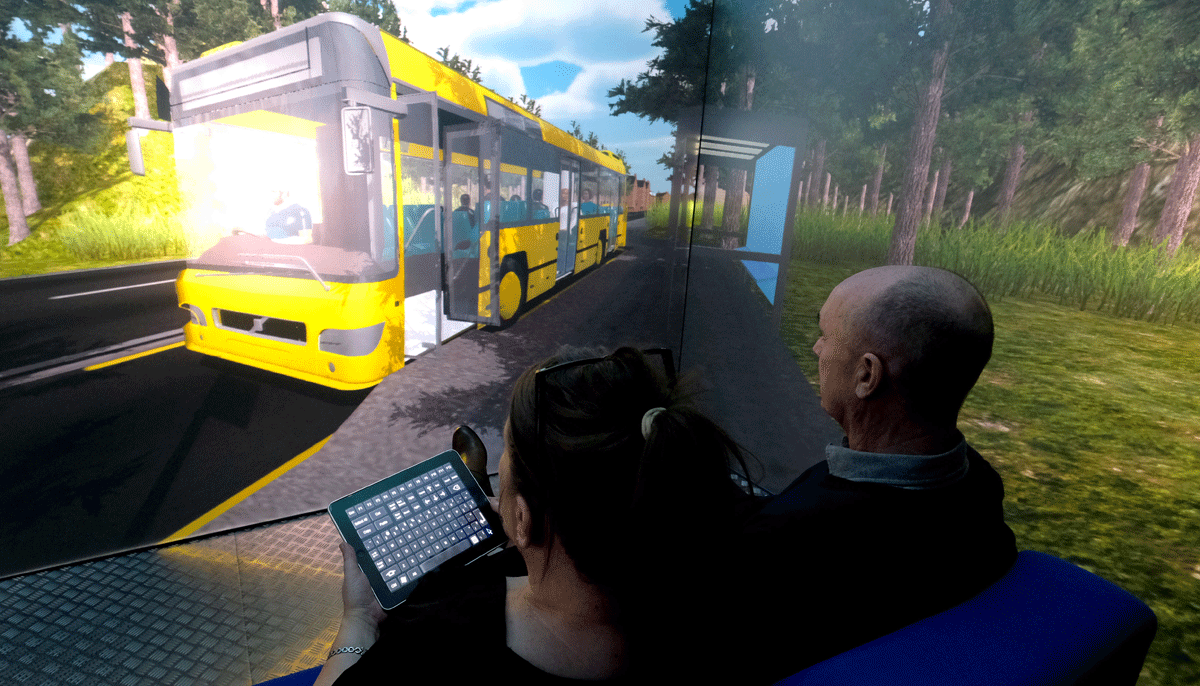Newcastle: The Blue Room, a unique immersive virtual reality which helps children
with autism overcome their fears and phobias is being offered on the
NHS. Following research showing that the Blue Room can help, the first patients have been referred for treatment. In 2014, the Newcastle University team reported in PLOS ONE, how eight out of nine children treated in the Blue Room were able to tackle the situation they feared and some were found to have completely overcome their phobias, even a year later. Now the immersive reality treatment is available as a
NHS service, where there is funding by the children’s Clinical
Commissioning Group, and each child referred will receive four sessions
at the facility in County Durham.
Immersive technology as treatment
They move around the scene using ipad controls, interacting and navigating through the scenario as they wish allowing them to fully control the environment.
Scenarios tested already include getting on a busy bus, crossing a bridge, going shopping or talking to an avatar shop assistant.
Supported by a psychologist, they are given breathing and relaxation exercises in the controllable and safe virtual environment to help them to learn to cope with that situation. They are observed by their parents via a video-link which enables them to watch the techniques used to help their child.
The flexibility of the Blue Room means that scenes can be gradually built up in complexity and noise level, allowing a graded exposure and element of control that cannot be achieved in real life.
Combatting situation specific anxieties, fears and phobias
Dr Jeremy Parr is a Clinical Senior Lecturer specialising in Paediatric Neurodisability at Newcastle University and works within the Northumberland, Tyne and Wear NHS Foundation Trust which is providing the service. He said: “Situation-specific anxieties, fears and phobias can completely stop a child with autism taking part in normal family or school life and there are very few treatment options for them. Currently the main treatment is cognitive behaviour therapy but that often doesn’t work for a child with autism as it relies on their imagination.
“People with autism can find imagining a scene
difficult so by providing it physically in front of the child’s eyes we
can sit alongside them and help them learn how to manage their fears.
“Our previous small scale study of this immersive
treatment for children is incredibly promising and work is continuing on
a much larger study. To see children able to face a situation that they
previously found so distressing, such as going into a shop after just
four sessions in the treatment room is amazing. It makes a huge
difference to their lives.”
To examine the long-term effectiveness of the
treatment, a larger-scale clinical study is being carried out with the
results due 2017 - in the initial study the effects were still felt by
children one year after treatment.
The treatment is being offered through the NHS England Commissioned
Northumberland Tyne and Wear NHS Foundation Trust Complex
Neurodevelopmental Disorders Service (CNDS), whose remit includes
research to develop new treatments and interventions and evaluate their
use in the NHS. Payment for the treatment will be through the local
Clinical Commissioning Group or equivalent and information can be found
on the Blue Room page of Newcastle University website.Harnessing technology
The technology supporting the treatment is being provided by ThirdEye technologies with a specialised facility in Consett, County Durham.
Managing Director Paul Smith said: “The Blue Room is
a module where all surfaces are screens so no goggles or headsets have
to be worn and this leads to you feeling totally immersed. When we were
developing the facility we knew it had endless possibilities but to be
able to harness the latest technology in order to help children with
autism control their anxieties and phobias is incredibly rewarding and
something we hadn’t anticipated.”
Around 150,000 children in the UK are thought to
have autism spectrum disorder and it affects four times more boys than
girls. Studies show that the condition costs the UK £32bn every year.
Many people with autism spectrum disorder have a fear or phobia which
can be so distressing that they and their families completely avoid the
situation.
The work has been implemented with the Newcastle
Academic Health Partners, a collaboration involving Newcastle Upon Tyne
Hospitals NHS Foundation Trust, Northumberland, Tyne and Wear NHS
Foundation Trust and Newcastle University. This partnership harnesses
world-class expertise to ensure patients benefit sooner from new
treatments, diagnostics and prevention strategies.
